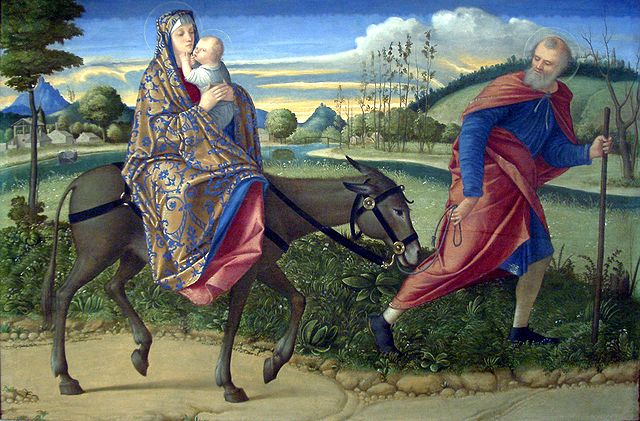'This unique festival honoured the humble donkey, especially the one that carried Mary and the infant Jesus on their flight to Egypt after Herod’s decree.'
From Aleteia
By Daniel Esparza
This unique festival honored the humble donkey, especially the one that carried Mary and the infant Jesus on their flight to Egypt after Herod’s decree.
The Middle Ages were a time of lively and sometimes strange traditions. One such tradition was the Festum Asinorum (literally, the Feast of the Donkey), a festive celebration held on January 14. This unique festival honored the humble donkey, especially the one that carried Mary and the infant Jesus on their flight to Egypt after Herod’s decree.
While the exact origins of Festum Asinorum remain unclear, it likely originated sometime during the 11th and 12th centuries. The festival flourished primarily in France, where it was known as the Fête de l’âne. It often coincided with, or even served as a precursor to, the Feast of Fools, another merry (and mischievous) festival held around the same time.
The festivities themselves (as is often the case with folklore) were a mix of the sacred and the profane. A donkey, decorated with a crown and ribbons, would be led in procession through the village and into the church. The priest would preside over a special “Mass of the Donkey,” including a sermon occasionally delivered from the donkey’s back.
Symbolism and legacy
The seemingly irreverent nature of the Festum Asinorum has puzzled and intrigued historians for centuries. Some interpret it as a form of social satire – the presence of the donkey in a sacred space seen as an opportunity for the lower classes to mock local authorities, as if in a pre-carnivalesque feast of sorts. But most scholars see it as a celebration of humility and simplicity, reminding the faithful that even the humblest of creatures can play a role in God’s plan.
Regardless of its interpretation, the Festum Asinorum offers a fascinating glimpse into medieval religious culture. It reminds us of some of the playful ways in which people have always engaged with their faith. The festival gradually declined in popularity during the 16th century, probably due to concerns about its perceived vulgarity and potential for misunderstandings. However, its legacy lives on in various artistic and literary works, and it continues to spark curiosity and debate among historians and religious scholars.
The Festum Asinorum may seem strange and even offensive to modern sensibilities. However, it is important to remember that it was a product of its time and context. Viewed through the lens of medieval culture, it can be seen as a feast that celebrated humility, docility, and diligence.

No comments:
Post a Comment
Comments are subject to deletion if they are not germane. I have no problem with a bit of colourful language, but blasphemy or depraved profanity will not be allowed. Attacks on the Catholic Faith will not be tolerated. Comments will be deleted that are republican (Yanks! Note the lower case 'r'!), attacks on the legitimacy of Pope Leo XIV as the Vicar of Christ, the legitimacy of the House of Windsor or of the claims of the Elder Line of the House of France, or attacks on the legitimacy of any of the currently ruling Houses of Europe.